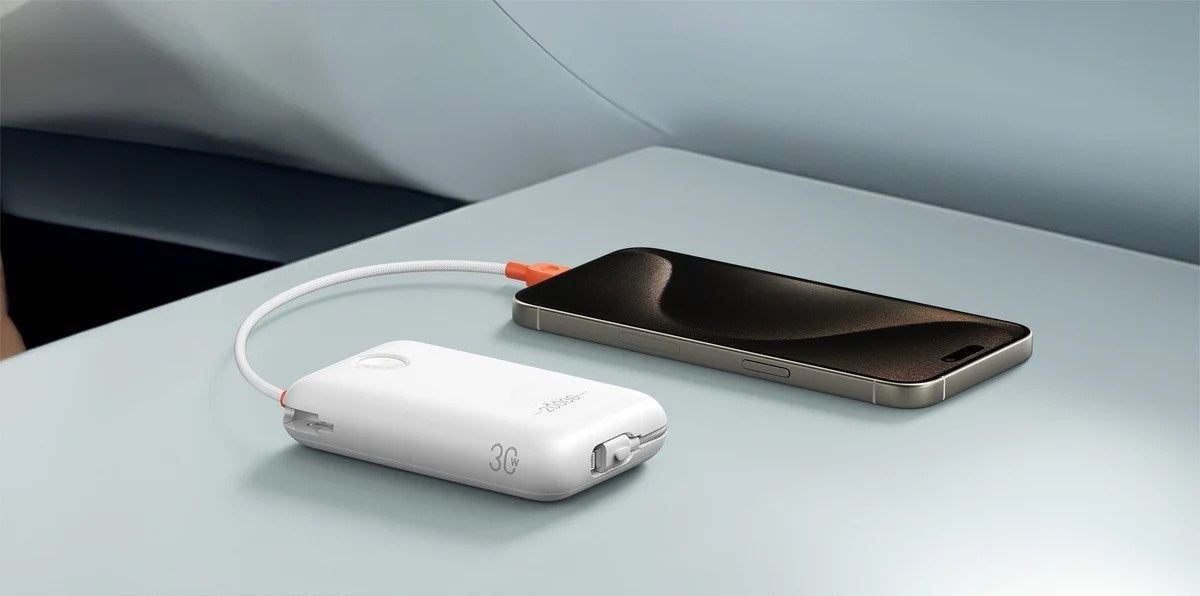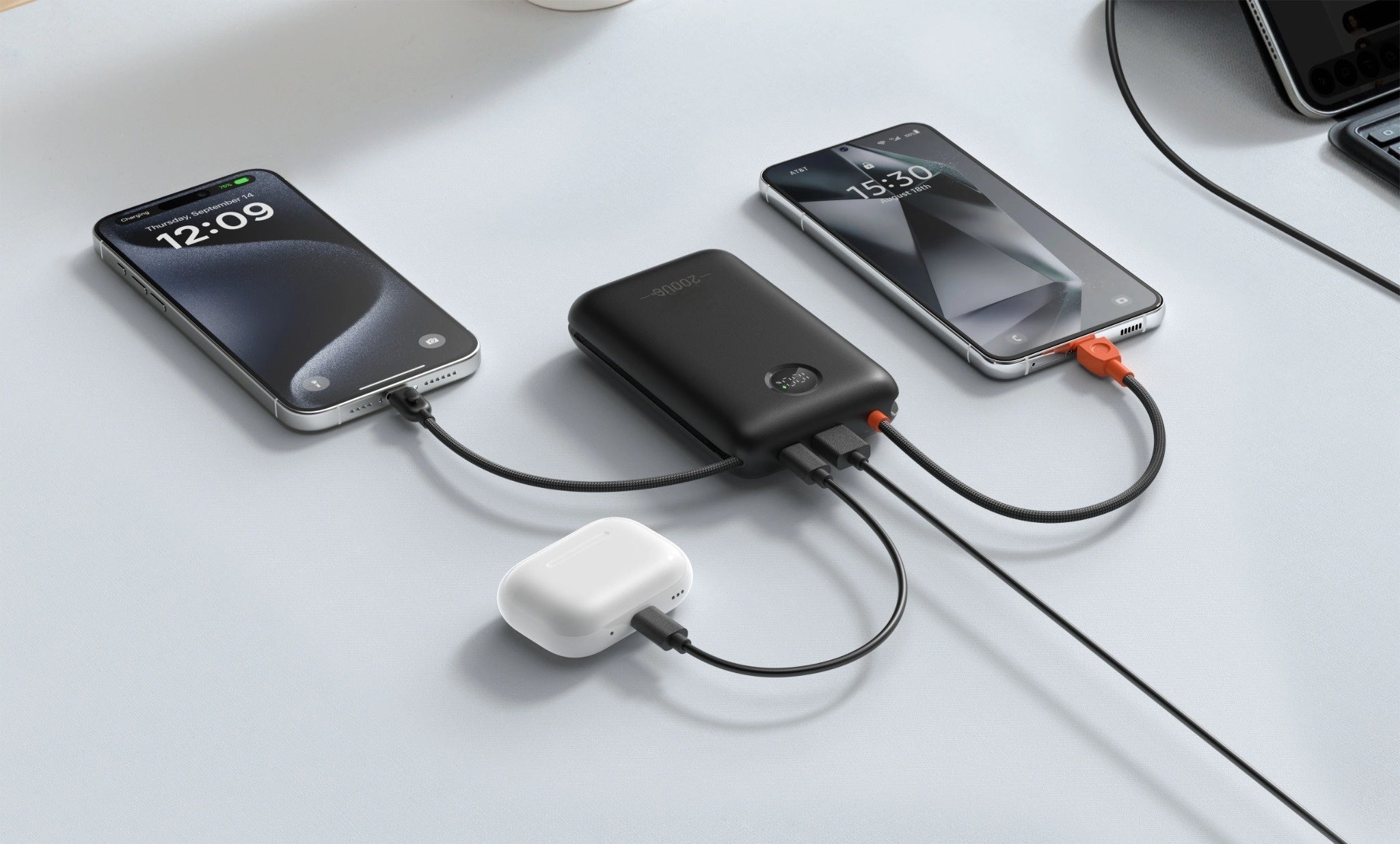Imagine reaching for your power bank to charge your phone, only to find it unusually hot in your hand. Panic? Understandable. When a power bank gets hot, it can be more than a simple nuisance—it could be a sign of serious trouble.
This guide breaks down why your power bank overheating happens, when it’s normal, how to act if your device gets too hot, and how to prevent overheating altogether. You’ll also learn when it’s time to replace your power bank to keep yourself and your devices safe.
Why Does My Power Bank Get Hot?
Power banks can get hot for a variety of reasons. One common cause is high power output—fast-charging models rated between 18W and 100W or more push a lot of current through compact internal circuits, naturally generating heat. This effect is amplified if you charge multiple devices simultaneously, pushing the power bank’s limits.
Poor ventilation also plays a big role. Charging your power bank inside a tightly packed backpack, under blankets, or in a hot car traps heat and prevents it from escaping, causing the device to heat up rapidly.
Battery aging is another factor. Lithium-ion batteries degrade over time, increasing their internal resistance and leading to more heat production. If your power bank is over two years old or has gone through many charge cycles, overheating becomes more likely.
In addition, using faulty or uncertified cables and chargers can cause electrical resistance that raises temperatures further. If you notice your charger gets hot when charging power bank, the issue might actually be the adapter rather than the power bank itself.
To avoid these problems entirely, consider switching to a safer power bank built with heat protection. Veger offers smart models with advanced temperature control that help prevent overheating from the start.
Is It Normal for a Power Bank to Get Hot?
Yes—and no.
Some heat is a natural byproduct of energy transfer, especially in high-wattage devices. If your power bank becomes slightly warm during charging, that’s typically normal. However, there’s a fine line between acceptable warmth and overheating:
- Slight warmth (30–40°C or 86–104°F): Normal during fast charging or hot weather.
- Hot to touch (above 50°C/122°F): A sign to unplug and cool it down.
- Burning smell, swelling, or discoloration: This means there’s a serious issue—stop using it immediately.
What to Do If Your Power Bank Gets Too Hot
Overheating power banks require quick and calm action. Here's a proven fix guide you can follow:
- Unplug everything. Disconnect your phone, tablet, or laptop right away. Stop both input (charging the power bank) and output (charging devices).
- Move it to a safe area. Place the power bank on a non-flammable, well-ventilated surface like a ceramic plate or metal tray.
- Let it cool naturally. Never try to force-cool it with a fridge or fan—that can create condensation and worsen the issue.
- Check for damage. If you see bulging, smell chemical odors, or spot melted plastic, don’t use it again. It could be a fire risk.
- Try different accessories. Faulty or mismatched chargers are a common culprit. Use certified USB-C PD cables and adapters.
If your power bank continues to overheat or the temperature spikes even when idle, it may be time to consider disposal. Visit our full swollen power bank guide for next steps.
How to Prevent a Power Bank from Getting Hot
Prevention is always better than reacting to a problem. Keep these best practices in mind to prevent power bank overheating:
- Only use certified accessories. Use USB-IF certified cables and manufacturer-recommended chargers.
- Give it breathing room. Never place your power bank in an enclosed area while charging. Let it dissipate heat.
- Charge in cool environments. Avoid charging in direct sunlight, near heaters, or in cars.
- Avoid charging while in use. Playing games or using your phone while it’s charging from a power bank increases workload.
- Don’t overcharge. Most modern banks shut off automatically, but unplug when full to reduce unnecessary stress.
Make sure you follow essential power bank safety tips to avoid potential fire hazards—especially with higher capacity models.
When Should You Replace Your Power Bank?
Replacing your power bank at the right time is essential for safety and reliable performance. As lithium-ion batteries age, their internal resistance rises, causing your power bank to get hot more easily—even under light use. Frequent overheating is a strong sign it’s time to replace the device.
Watch for these warning signs: increased heat during charging or discharging, visible wear such as bulging, discoloration, or soft spots on the casing, unreliable charging with frequent disconnects, and a noticeable drop in capacity (for example, charging your phone only once instead of multiple times).
You can also check the battery cycle count if your power bank supports it—most last around 300–500 full cycles, roughly two years of daily use. If your power bank gets hot while idle or shows swelling, stop using it immediately. Upgrade to a safer model with thermal protection features to avoid risks.
FAQs about Power Bank Overheating
Is it safe if the power bank gets slightly warm?
Yes, especially during fast charging. Mild warmth is expected and generally not dangerous.
Can a hot power bank damage my phone or laptop?
Yes. Overheating can affect voltage stability and harm connected devices. Disconnect when you sense heat buildup.
Why does the power bank feel hotter at ports?
Ports are where power is transferred, generating heat from current flow. If too hot, check your cable’s quality.
How long should a power bank take to cool down?
Usually within 20–30 minutes after unplugging, depending on ambient conditions.
What if power bank overheats while charging?
Stop using it. Switch cables, use a different charger, and ensure good airflow. Don’t resume until it’s cool.
Is leaving a power bank in a hot car dangerous?
Absolutely. Leaving your power bank in a hot car is particularly risky. Vehicle interiors can reach temperatures over 140°F (60°C) within 30 minutes on a sunny day, far exceeding safe limits for lithium-ion batteries and risking permanent damage or even fire. Learn why electronics overheat in cars and take extra precautions.
Final Verdict
If your power bank gets hot, don’t ignore it. While some heat is normal, power bank overheating is a warning sign that deserves attention. Handle your power bank with care, keep it away from extreme temperatures, and invest in certified gear to avoid problems.
Looking for a safer, smarter solution? Veger offers premium power banks built with multi-layer protection against overheating, overcharging, and short-circuits—so you can stay charged with peace of mind.



![How Do You Charge a Laptop Without a Charger [2025 Guide]](http://www.vegerpower.com/cdn/shop/articles/how-do-you_-charge-a-laptop-without-a-charger.png?v=1753175989&width=1000)
